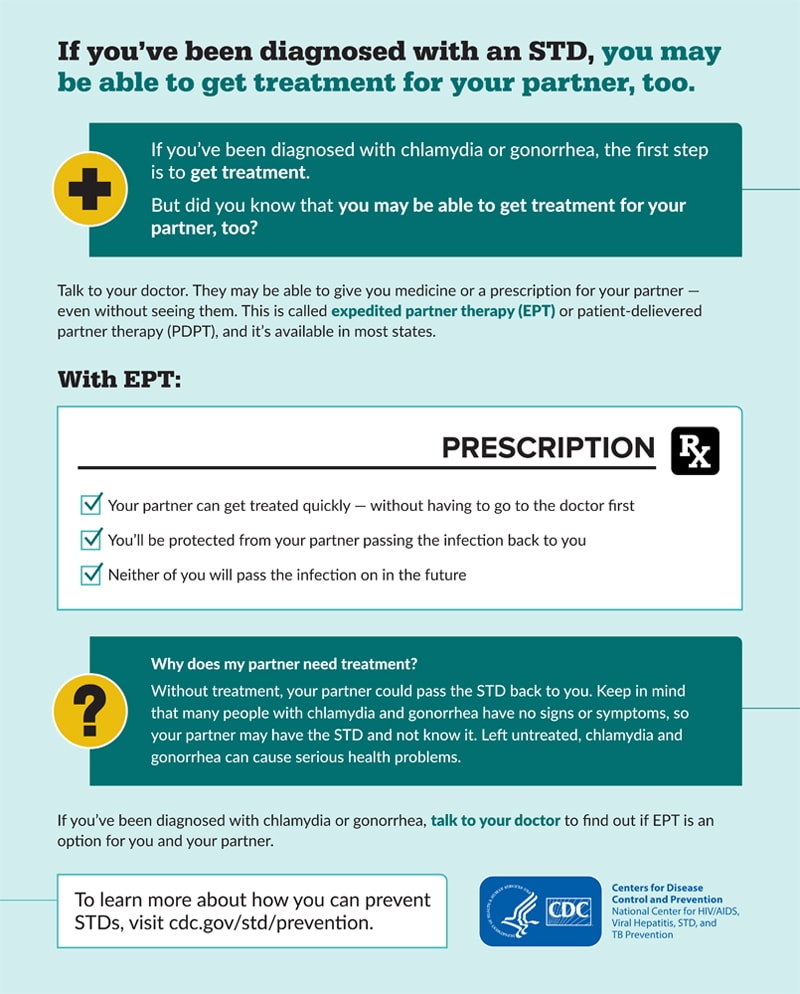Because chlamydia is very common and often has no symptoms, people who have had sex should think about being tested. The Centers for Disease Control and Prevention (CDC) recommend sexually active women age 25 or younger get tested once per year. Chlamydia testing is also recommended for women with new or multiple sexual partners and pregnant women.
But men and women both should talk with a healthcare provider about whether they need testing for chlamydia or other STIs. Don’t be afraid to speak openly about your sex life, as you can get the best care by having an honest discussion with your healthcare provider.
There are several different reliable tests for chlamydia. Newer tests, called NAATs (short for nucleic acid amplification tests), are very accurate and easy to take. Your healthcare provider can explain what testing options are available (urine or swab tests, for example). If you don’t have a regular healthcare provider, you can search here for a clinic near you.
People infected with chlamydia are often also infected with gonorrhea. Therefore, patients with chlamydia are often treated for gonorrhea at the same time, since the cost of treatment is generally less than the cost of testing.
If you live in Alaska, Maryland, or Washington, D.C., you can have a free at-home chlamydia test. Visit iwantthekit.org for more information.
If you test positive for chlamydia, check out CDC’s fact sheet, “Just Diagnosed? Next Steps After Testing Positive for Chlamydia or Gonorrhea.”
Treating Chlamydia
There are antibiotic treatments that are effective in treating chlamydia. A healthcare provider will decide which antibiotic is prescribed, taking into consideration the particular needs of the patient.
Whatever treatment is prescribed, there are some important points about any treatment:
- The patient must take all medications as directed.
- All partners should be examined and treated.
- The infected person should not have sex until he or she and any partner or partners have been treated and cured.
- Persons who show symptoms after treatment should be tested again by culture.
- Infections detected after treatment with one of the recommended treatments more commonly occur because of reinfection rather than treatment failure.
- Women should be retested three to four months after treatment because of a high rate of reinfection.
- Because the symptoms of chlamydia are similar to the symptom of gonorrhea, and because a person can be infected with both, doctors will sometimes go ahead and treat people with chlamydia for both infections (chlamydia and gonorrhea). Remember, partners should be examined for infection and treated as well to avoid reinfection.

